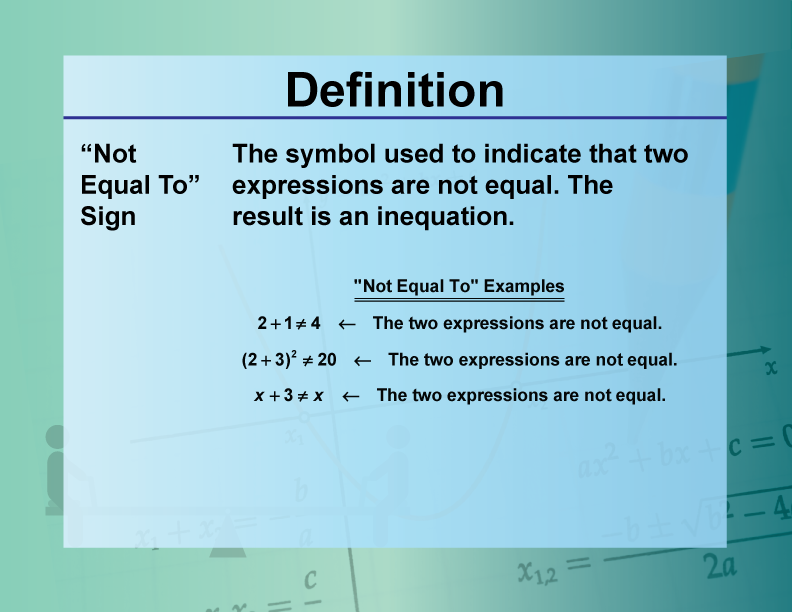
Display Title
Definition--Equation Concepts--"Not Equal To"
Display Title
Not Equal To

Topic
Equations
Definition
The "Not Equal To" symbol (≠) is used to indicate that two values are not equal.
Description
The "Not Equal To" symbol is crucial in mathematics as it denotes inequality between two expressions. This symbol is used in various mathematical contexts, such as solving inequalities, comparing numbers, and expressing conditions in algebraic equations. For example, in the inequality 𝑥 ≠ 5, it means that x can be any number except 5.
In real-world applications, the "Not Equal To" symbol is used in programming, data analysis, and logic to set conditions and filters. For instance, in a database query, one might use ≠ to exclude certain values from a dataset. Understanding this symbol is fundamental for students as it lays the groundwork for more complex mathematical concepts and logical reasoning.
For a complete collection of terms related to functions and relations click on this link: Functions and Relations Collection
| Common Core Standards | CCSS.MATH.CONTENT.6.EE.B.5, CCSS.MATH.CONTENT.7.EE.B.4, CCSS.MATH.CONTENT.HSA.REI.A.1 |
|---|---|
| Grade Range | 6 - 12 |
| Curriculum Nodes |
Algebra • Expressions, Equations, and Inequalities • Numerical and Algebraic Expressions |
| Copyright Year | 2021 |
| Keywords | equations, solving equations, definitions, glossary terms |